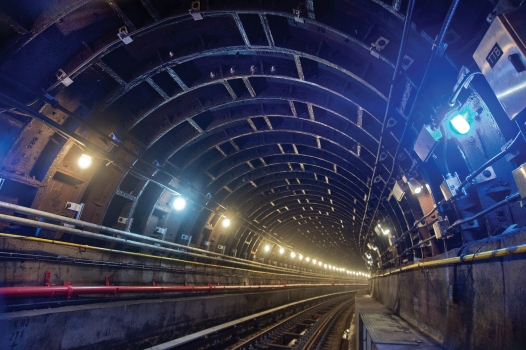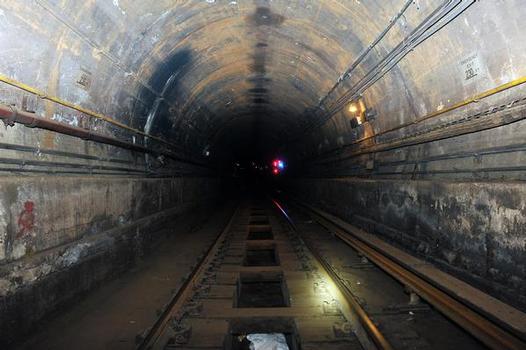General Information
Project Type
| Function / usage: |
Metro tunnel / subway tunnel |
|---|---|
| Structure: |
Tunnel |
| Construction method: |
Tunnel shield |
Location
| Location: |
Manhattan, New York, New York, USA Brooklyn, New York, New York, USA |
|---|---|
| Address: | Montague Street |
| Underneath of: |
|
| Part of: | |
| Coordinates: | 40° 41' 53" N 74° 0' 20" W |
Technical Information
Dimensions
| number of tracks | 2 | |
| number of tubes | 2 |
Cost
| cost of construction | United States dollar 9 867 906.52 |
Materials
| tunnel structure |
cast iron
|
|---|
Chronology
| 2 June 1917 | Breakthrough of the north tunnel. |
|---|---|
| 20 June 1917 | Breakthrough of the south tunnel. |
| 29 October 2012 | Hurricane Sandy causes severe flooding in the tunnel. |
| 21 December 2012 | The tunnel is re-opened after emergency repairs though a more complete reconstruction is required to repair de tunnel permanently. |
| 2 August 2013 | The tunnel is completely closed for a complete reconstruction of the tunnel systems due to the damage caused by Hurricane Sandy. |
| 14 September 2014 | The tunnel is put back into service a month earlier than planned after reconstruction is completed successfully. |
Excerpt from Wikipedia
The Montague Street Tunnel is a rail tunnel of the New York City Subway under the East River between the boroughs of Manhattan and Brooklyn, connecting the BMT Broadway Line and BMT Fourth Avenue Line. The R uses the tunnel at all times, the N uses it during late nights, and during rush hours, several W trains per day in each direction use the tunnel.
History
Construction of the tunnel began on October 12, 1914, using a tunneling shield in conjunction with compressed air. The tunnel was designed by civil engineer Clifford Milburn Holland, who would later serve as the first chief engineer of the Holland Tunnel. The north tube of the tunnel was holed through on June 2, 1917, and the south tube was holed through on June 20, 1917.
It opened to revenue service on August 1, 1920, the same day as the 60th Street Tunnel, on a holiday schedule; regular service began the next day. The two new tunnels allowed passengers to make an 18-mile (29 km) trip from Coney Island, through Manhattan on the BMT Broadway Line, to Queens for a 5-cent fare. The original construction cost was $9,867,906.52, almost twice that of the 60th Street Tunnel.
On December 27, 1920, more than ten thousand passengers were forced to evacuate the tunnel. Power to the third rail was shut off after a shoe beam on a train approaching Whitehall Street fell and caused a short circuit, stranding ten subway trains inside the tunnel.
On October 29, 2012, the tunnel suffered severe flooding from Hurricane Sandy and as a result, was closed to train service while repairs were being made. Service in the tunnel was restored using temporary equipment on December 21. However, the MTA later announced that a complete reconstruction of the tunnel systems was needed, so the tunnel was closed for a second time around-the-clock on August 2, 2013. Originally slated to open by October 15, 2014, it reopened a month early on September 15, 2014.
Constraints
Use of the Montague Street Tunnel, the Cranberry Street Tunnel, or a combination of the two tunnels were considered as alternatives in lieu of constructing a new tunnel under the East River for the proposed Lower Manhattan – Jamaica/JFK Transportation Project. Use of the existing tunnel was considered as an option because the Montague Street Tunnel had surplus capacity, having carried the M train until its reroute from the BMT Nassau Street Line to the IND Sixth Avenue Line in 2010, and the N train during the reconstruction of the Manhattan Bridge from 1986 until 2004.
Text imported from Wikipedia article "Montague Street Tunnel" and modified on August 20, 2020 according to the CC-BY-SA 4.0 International license.
Participants
- Clifford Holland (design engineer)
Relevant Web Sites
- About this
data sheet - Structure-ID
20032019 - Published on:
17/09/2007 - Last updated on:
28/05/2021






